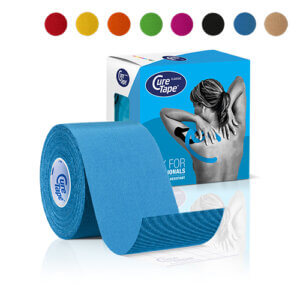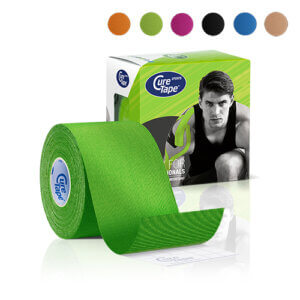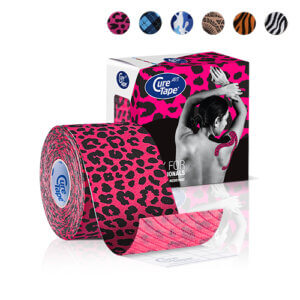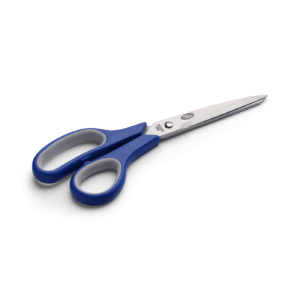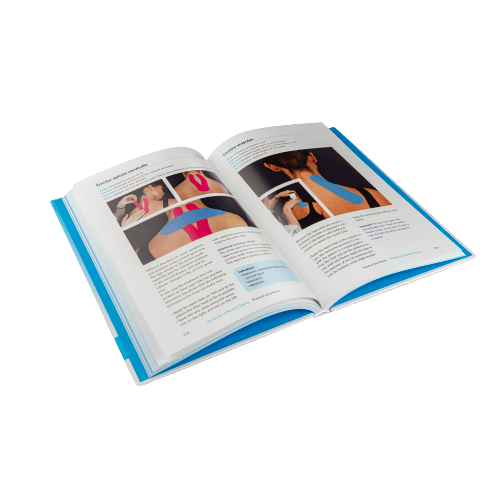Of all the fingers, the thumb is used the most. As a result, wear and tear of the thumb base (thumb joint) often occurs. This wear and tear causes osteoarthritis of the thumb base. This is a common disorder, particularly affecting women over the age of 40. Today, the younger generation is also increasingly affected by thumb wear due to frequent smartphone use, resulting in a “texting thumb”.
The carpometacarpal joint is not very stable; as soon as the ligaments and muscles are overloaded or weakened, the bones (first carpometacarpal and carpal) in the joint no longer glide smoothly and wear and tear can occur. The quality of the cartilage between the joints deteriorates, resulting in all kinds of complaints.
Symptoms of osteoarthritis of the thumb
- Pain in the thumb joint with every movement.
- A nagging feeling in the joint.
- Painful thumb ball.
- Inflammation of the joint.
- Stiffness of the joint.
- A palpable lump or bulge.
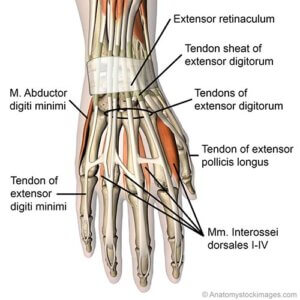
Get started with these items to tape osteoarthritis in your thumb
How to tape osteoarthritis of the thumb
A therapist can use kinesiology taping as part of a treatment programme to reduce complaints. Beginnings of complaints can be remedied very well. If the osteoarthritis is in an advanced stage, pain reduction with this taping method can bring relief, but a doctor should generally be consulted.
Many hand therapists and physiotherapists use the following tape application for thumb base osteoarthritis and thumb pain.
Instructional video
Tape instruction:
- Cut 3 I-strips and narrow the base.
- Apply the first tape (lime), starting at the thumb nail, to the back of the hand. Bend the thumb slightly and let the tape run towards the wrist and forearm.
- The next tape (black) is applied in the same way but over the medial side of the thumb joint.
- The third lime coloured tape is applied from the palmar side of the hand over the wrist, towards the inside of the forearm.
This taping application provides support, has a pain-relieving effect, and is used as part of a therapeutic treatment.

Christina’s advice when taping your hand
When taping your hand, it’s crucial to choose a tape that provides strong adhesion and support. That’s why I recommend CureTape kinesiology tape. For regular use, CureTape Classic or Art is ideal. However, if you’re using your hands a lot on a daily basis, opt for the extra sticky CureTape Sports variant!
Learn how to tape
- The Ultimate Taping Guide: Focuses on self-taping for the 30 most common injuries where taping provides support.
- Kinesiology Taping Method Manual: Designed for (para medical) professionals, covering basic taping techniques and various pathologies.
- Decompressive Taping Techniques Manual: Specifically focuses on lymphatic taping methods for decompression.
What are you waiting for? Order a copy today!
THYSOL is the manufacturer of the kinesiology tape brand CureTape. As CureTape, we have been training and supplying professionals for 25 years. And consumers now know how to find us too! By manufacturing all our tapes in our own factory, we can guarantee the best quality!
Please note that the indicated tape applications and information on our website about the possibilities with kinesiology tape have not yet been scientifically proven. The statements and examples mentioned are based on long-term experiences of patients and trained therapists.Contraindications not to tape: pregnancy, open wounds, broken bones, unexplained complaints, allergies and skin diseases, use of medication such as blood thinners, thrombosis and fever. Always apply tape in consultation with a specialist.

